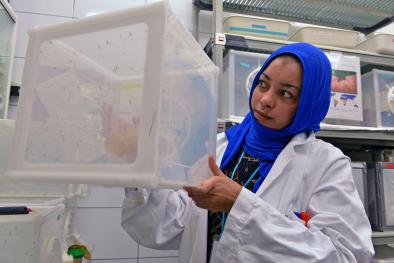Science Source
Toward climate change impact: vectors carrying viral infection: what we should know
- States that in recent years, due to global temperature changes, two phenomena have been observed:
- the migration of mosquitoes to places that have become warmer, enabling them to adapt to new niches and spread to new areas, and
- the ability to better survive in different seasons
- States that the increasing incidence of warm winters favours better conditions for mosquitoes and ticks, increasing the exposure of humans to virus infection, especially in urban areas
- This report provides the public with four pillars of information:
- The first (chapters 1-3) gives general information about the vectors, viruses and the detection methods, and
- the second (chapter 4) gives the most recent literature data about their distribution, particularly in Europe
- The third (chapter 5) is mainly focused on ZIKV, and compares the recent extensive media attention given to this with the scientific results, in order to avoid the spread of fake news (incorrect scientific news)
- Finally, the fourth pillar (chapter 6) describes mosquito control strategies, which includes several tactics for limiting the spread of mosquitoes and monitoring their habitats
Related Content
Science Source
| Proceedings of the National Academy of Sciences
Global risk model for vector-borne transmission of Zika virus reveals the role of El Niño 2015
Cyril Caminade, Joanne Turner, Soeren Metelmann et al
Headline

Apr 7, 2017 | Carbon Brief
Zika outbreak ‘fuelled by’ El Niño and climate change
Science Source
| MMWR. Morbidity and Mortality Weekly Report
Vital Signs: Update on Zika Virus–Associated Birth Defects and Evaluation of All U.S. Infants with Congenital Zika Virus Exposure — U.S. Zika Pregnancy Registry, 2016
Megan R. Reynolds, MPH; Abbey M. Jones, MPH; Emily E. Petersen et al
Headline

Apr 4, 2017 | The New York Times
One in 10 Pregnant Women With Zika in U.S. Have Babies With Birth Defects


